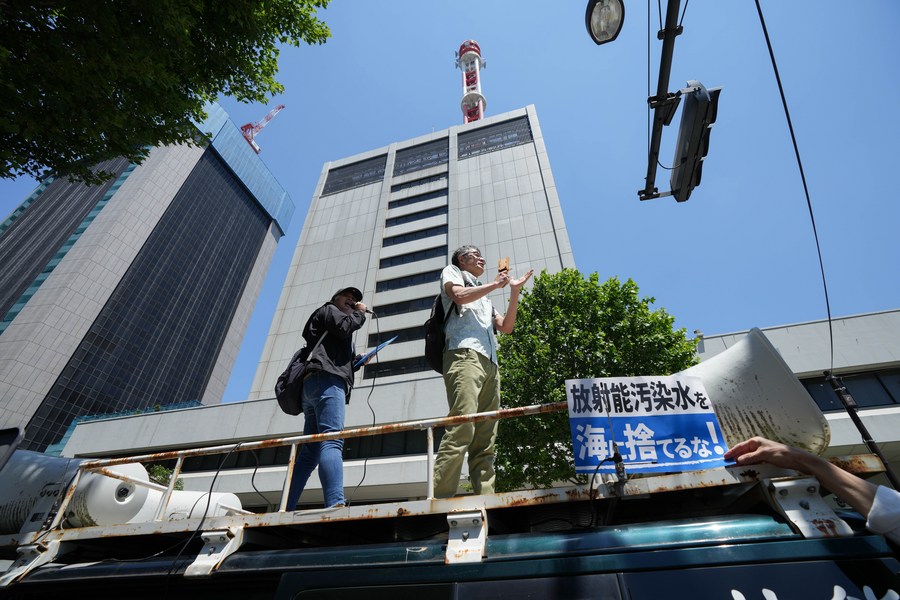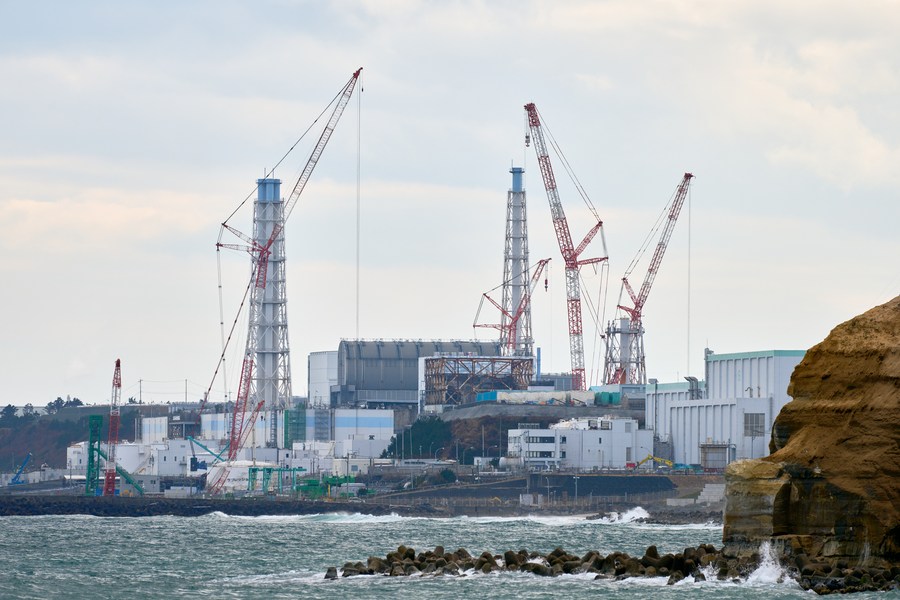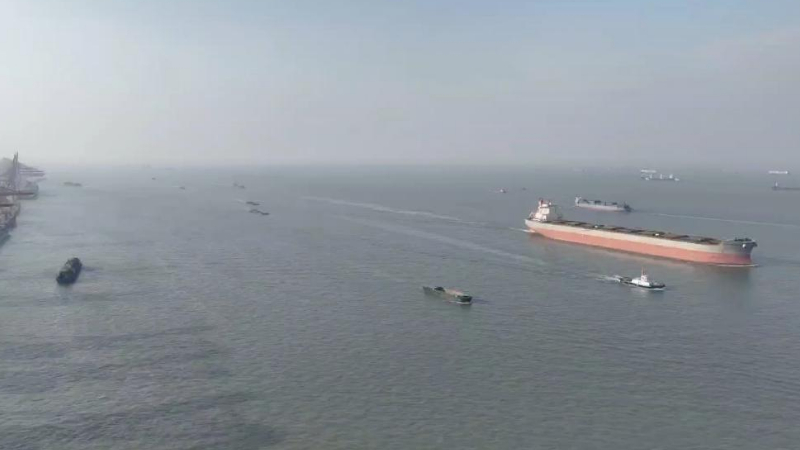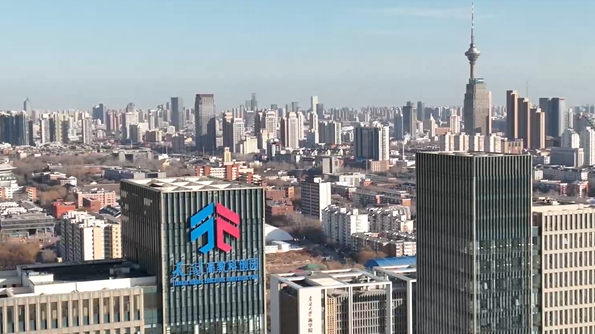 People rally in front of the headquarters of Tokyo Electric Power Company (TEPCO) to protest against the Japanese government's plan to discharge nuclear-contaminated water into the sea in Tokyo, Japan, May 16, 2023. (Xinhua/Zhang Xiaoyu)
People rally in front of the headquarters of Tokyo Electric Power Company (TEPCO) to protest against the Japanese government's plan to discharge nuclear-contaminated water into the sea in Tokyo, Japan, May 16, 2023. (Xinhua/Zhang Xiaoyu)
The dry storage facility, encompassing approximately 9,800 square meters, will feature nine fuel storage units fortified with 40-centimeter-thick concrete walls.
TOKYO, April 7 (Xinhua) -- In the wake of recent contaminated water leakage at Japan's Fukushima Daiichi Nuclear Power Plant, the plant's operator Tokyo Electric Power Company (TEPCO) has announced its plan for new installations as a preventive measure, local media reported.
TEPCO is expected to install new piping and ventilation ports designed to guide any spewing liquid to fall within the building, thereby containing the spread of contamination, national news agency Kyodo reported citing the company's announcement on Friday.
The construction is slated to commence on Monday and is expected to be completed by the end of the month, according to the operator.
On Feb. 7, approximately 1.5 tons of nuclear-contaminated water containing 6.6 billion becquerels of radioactive materials leaked from the crippled plant due to human error, as several valves that should have been closed were left open during the cleaning of pipes for the simplified active water retrieve and recovery system (SARRY) used to treat contaminated water in the building.
In October last year, another incident occurred at the crippled nuclear plant in which five workers were directly exposed to liquid waste containing radioactive materials.
According to TEPCO, the plan involves cutting off the piping connected to the high-temperature incinerator building where the contaminated water leak occurred. New pipes will be installed in the vertical direction, ensuring only gas is released from the ventilation ports outside the building.
Water flowing into the pipes will be directed to polyethylene containers inside the building, with covers installed to prevent scattering. Outside the containers, facilities will be set up to collect water, while leaks will be monitored using cameras and detectors.
Also on Friday, TEPCO submitted a request for approval to the Nuclear Regulation Authority for modifications to its decommissioning plan, including the construction plan for a dry storage facility to manage spent nuclear fuel at the crippled plant, which is set to be situated in the elevated area.
The dry storage facility, encompassing approximately 9,800 square meters, will feature nine fuel storage units fortified with 40-centimeter-thick concrete walls, Kyodo reported, adding that these units are expected to house around half of the 9,532 spent fuel assemblies remaining in pools for Units 1 to 4, and the fuel will be stored in 69 metal containers.

Photo taken on March 6, 2023 shows the Fukushima Daiichi nuclear power plant in Futabacho, Futabagun of Fukushima Prefecture, Japan. (Xinhua/Zhang Xiaoyu)
TEPCO aims to initiate construction within the plant premises during the fiscal year of 2025.
Hit by a 9.0-magnitude earthquake and an ensuing tsunami on March 11, 2011, the Fukushima nuclear plant suffered core meltdowns that released radiation, resulting in a level-7 nuclear accident, the highest on the International Nuclear and Radiological Event Scale.
The plant has been generating a massive amount of water tainted with radioactive substances from cooling down the nuclear fuel in the reactor buildings, which is now stored in tanks at the nuclear plant.
In August 2023, Japan started to discharge wastewater into the Pacific Ocean, despite repeated objections by governments and communities, environmental groups, non-governmental organizations, and anti-nuclear movements in Japan and the Pacific region.
Amid raging credibility and safety concerns among the Japanese public following a series of accidents at the crippled plant, TEPCO and the Japanese government have been frequently challenged for the ocean discharge as the decommissioning process remains ambiguous.■












